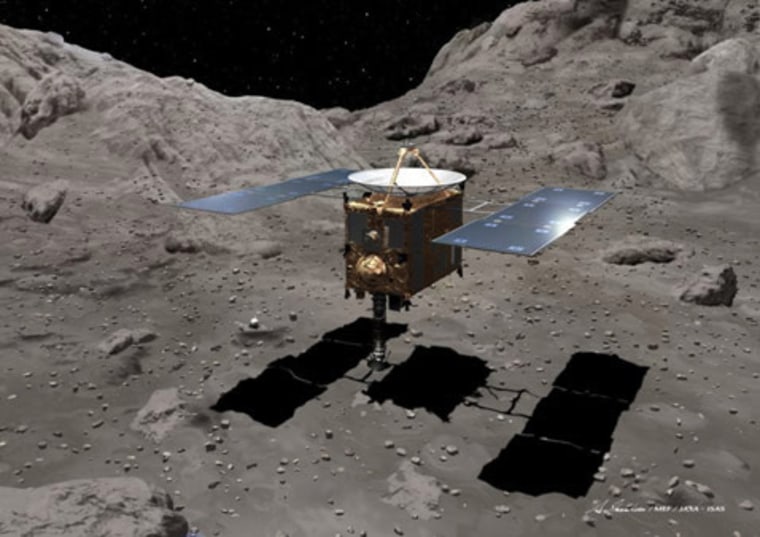Japan's beleaguered space probe Hayabusa, which may or may not have collected samples of an asteroid, fired up its engine Wednesday to resume its trip back to Earth.
After more than a year coasting through space, Hayabusa reignited its ion-powered engine to begin the second leg of what has become an extra-long trek home from the asteroid Itokawa, said officials with the Japanese Aerospace Exploration Agency.
"We are continuing to pay careful attention to our onboard equipment and are doing our utmost to operate the Hayabusa with the greatest care," JAXA officials said in a mission update.
The spacecraft is expected to return in June 2010 to deliver a sample canister that will plunge through the atmosphere and land on Earth. Hayabusa would be the first spacecraft to return samples from an asteroid, though past NASA probes have collected samples from a comet and solar wind.
Hayabusa had been flying in a silent coast mode since April 2007, when it officially began the 180 million mile (290 million km) trip home from Itokawa. The spacecraft arrived at Itokawa in 2005, but suffered a series of glitches and malfunctions that left flight controllers unsure whether it actually managed to collect a sample of the asteroid's surface.
Hayabusa also lost a smaller probe, dubbed Minerva, which was supposed to hop around Itokawa's surface and take close-up pictures. The probe was successfully deployed, but drifted off the asteroid's surface soon after, JAXA officials said at the time.
While practice landing attempts were plagued by glitches, Hayabusa did eventually touch down on the potato-shaped asteroid. The spacecraft also photographed the asteroid throughout its mission.
Hayabusa lost two of its three attitude-controlling gyroscopes during flight, with a subsequent fuel leak and communications issues forcing mission managers to delay its return by three years to June 2010.
Since its launch in May 2003, Hayabusa's ion engine has operated for about 31,000 hours. Ion engines accelerate spacecraft slowly by using electricity generated by solar arrays to charge a stream of xenon gas. The resulting charged particles, or ions, are then shot out a nozzle to generate thrust over time.
The method allows spacecraft to fly farther with less fuel. NASA is using an ion drive on its Dawn spacecraft, a probe that is en route to be the first to visit two asteroids — Vesta and Ceres — in a single mission.
JAXA officials said Hayabusa will continue to fire its ion drive until about March 2010, after which its trajectory will be refined for the planned June 2010 capsule return.
